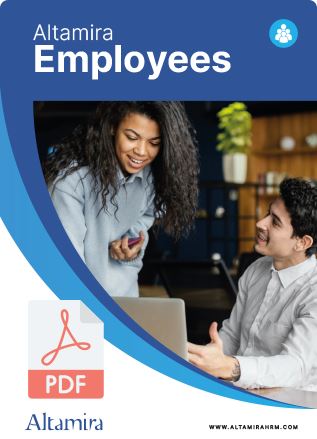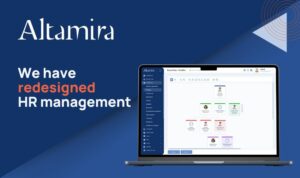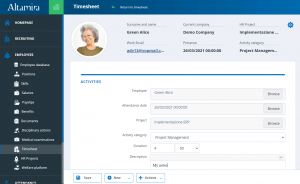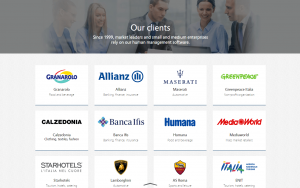Everyone is talking more and more about employer branding and the importance of knowing how to attract the right kind of people to your company. The precise definition of this term is somewhat fuzzy, as it is very closely related to other types of activities such as customer branding and internal branding.
In the past, the tendency was to give more weight to the “employer” part of the equation rather than to the “branding” part. As a result, such activities were considered the exclusive prerogative of the Human Resources department, without being connected to the company’s global strategy.
Nowadays, however, in an era in which employees are the first brand ambassadors for a company and are able to influence its reputation just by putting up a Facebook status, it no longer makes any sense to not actively involve Marketing and Management in this process.
Furthermore, employer branding doesn’t only affect the perception of the company’s brand and its ability to attract the talent that best matches its values, but also has direct effects on its capacity to retain staff and on their performance.
A new employee who sees that the promises made during the recruitment process are not fulfilled will most likely not stay with the company for a long time, and will not give their 100%.
Here are some helpful tips for approaching this task in the right way.
14 useful tips for employer branding
- It’s not just HR. The most important aspect to understand is that an employer branding strategy requires the coordinated action of multiple divisions of the company: Human Resources, Marketing and Management. While, on one hand, it is necessary to join efforts and implement a common and uniform strategy in the form of a coordinated communications approach, on the other hand, it’s also important to not “step on anyone’s toes” and venture into areas that are outside one’s field of expertise.
- Define your employer identity. What kind of atmosphere do you have in your company? Are organization and discipline the most valued aspects, or rather inventiveness and competitiveness? What makes the company stand out from its competitors? Identify those factors that best characterize your company as an employer, and put them all together in one picture that would be both accurate and clear to everyone. If you can’t clearly tell what the added value of your company is, how can someone see it when they’re on the outside looking in?
- Position your identity. Positioning, both at the global and local level, is of extraordinary importance in the employer branding process. It is through this process that we stand out from the competition and try to make our identity align with the perception that candidates will have of our company.
- Use your employees. The real stars of employer branding are your employees. After all, who better to testify about how great (or not so great) it is to work for your company?
This prominent role can be leveraged through many types of initiatives and best practices, from highlighting the testimonials of the staff on your company’s Career site to making sure that its values, history and business objectives are perfectly clear to everyone. For example, you could conduct interviews with your colleagues in which they talk about their career paths within the company and all the skills they have acquired over the years while working there.
Research has also shown that an employee who is satisfied—or, even better, one who is enthusiastic about their job—is much more likely to speak out in favor of their company in a public setting, both online and offline. Thus, you should also make sure that your employee engagement program is working well. - Make communications consistent. Pursuing a common strategy for employer branding also serves to ensure that applicants and employees don’t end up receiving different—or even contradictory—messages from the company. Your social media presence, your company website, your blog, your job ads, your brochures and your accounts on various platforms must all speak the same language.
The Career site is the focal point of this operation: you can use it not only to publish job openings, but also to showcase the best public face of the company. You can include career paths, testimonials, lists of benefits, team building activities that took place, and any other information that will make everyone want to work for you.
A Career site also allows you to gather a pool of potential candidates that will come in handy later. Indeed, the perfect candidate might put themselves forward even when there isn’t any job opening at the moment. - Transparency and authenticity are key. This is based on one fundamental premise: that, in the age of information and two-way communication, sooner or later the unvarnished truth will come out. Thus, it is a better approach to be fully transparent and authentic, perhaps by making use of modern platforms such as Glassdoor, which allow employees to express their opinions about the company they work for.
Everyone will inevitably get an impression about your company based on the information they have available. So, why not strive to manage this process and lead it into the desired direction?
Lying is pointless: if you boast that you’re a company that helps with career advancement but you never actually offer training to your employees, you can be certain that the truth will come out. - Take advantage of SEO. Pages and text that are optimized according to the principles of Search Engine Optimization enjoy greater visibility online. Pay particular attention to the process of crafting the titles and headings, as well as choosing the right keywords.
- Not just text. If you use plenty of high-quality photos and videos, this can greatly increase both the impact and appeal of your messages. Videos and infographics that are particularly well-made could also become viral, expanding your audience and netting you valuable inbound links.
- Tailor your social media approach. We have already mentioned coordinated communications and a unified message, but this doesn’t mean that all your channels should “speak” in the same tone and style. It’s obvious that what you communicate through social media is quite different from what you would write on the company’s website. Indeed, the appropriate communication style can be very different from one social media platform to another!
- Remember mobile users. Nowadays, a significant part—if not the majority—of job searches are conducted through mobile devices such as smartphones and tablets. Thus, if your company’s website and Career site are not responsive, this turns into a serious handicap, and you should avoid such a situation at all costs.
- Set up a company page on Indeed. Indeed is the biggest job search site worldwide, and it provides an excellent way for companies to present themselves through its company pages. Enrich your employer branding strategy by creating such a page, which will work as a real miniature Career site. It can showcase your job openings, your company culture, testimonials from current and former employees, questions and answers about your company and much more. Furthermore, thanks to the metrics that are tracked automatically, such pages represent an effective tool for the benchmarking and analysis of your visibility compared to that of your competitors.
- Don’t forget the offline world. One of the best ways to establish your reputation as an employer is to take part in job fairs and other events related to Human Resources. Just make sure that your recruiters are ready to project the best image for your company and collect the most promising contacts.
- Network. Make use of partnerships with universities and high schools, using the available frameworks to set up training and internship projects. In many places, some MA programs exist almost exclusively thanks to particular companies who are looking for highly specialized talent.
- Leverage your data. Employer branding must be a continuous process. In an increasingly dynamic labor market, you never know when you’ll need to look for new hires for positions that you thought were reliably covered.
Thus, you also need to know how to keep up the interest of passive candidates in order to have a “reserve pool” of talent ready to recruit: you have to understand who they are, where they are and how to communicate with them.
Recruiting software can be very useful for this, as it is able to generate reports that provide you with valuable information. For example, using our software solution, you can know which job search engine has netted you the greatest number of applications, which age brackets find your job ads most appealing, which universities have trained the most promising candidates for your company, etc.
Thanks to employer branding, you’ll be able to convey the core values of your company and get the attention of those candidates that best identify with them.
This process of “natural selection” from the outset will facilitate your recruiting operations by reducing the cost of each new hire. It will also limit the risk of hiring the wrong type of candidate, something that can result in very high costs for a company later on.




























































































